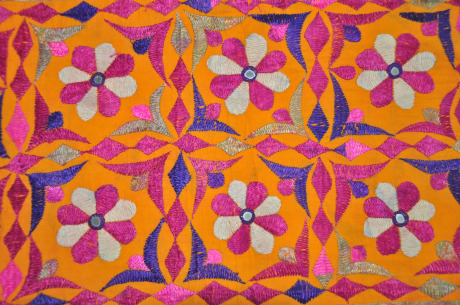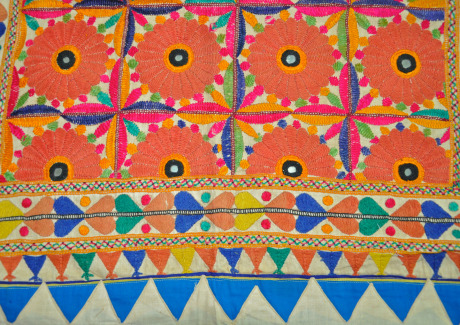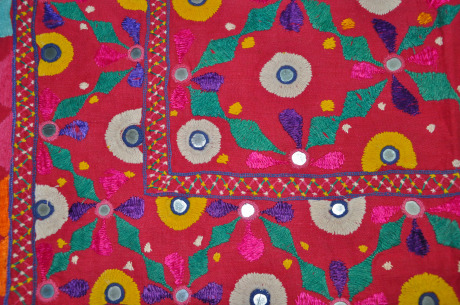Shisha is a Hindi term meaning “little glass,” derived from the Persian word for glass. It refers to the use of mirror-work in combination with different forms of embroidery, and is believed to have been first developed in Persia in the 13th century and then India in the 17th century. Originally Mica flakes were used as mirror pieces. Over time blown glass cut into small pieces and silvered on the back became more common.
The mirrored pieces are typically used as focal points in designs, especially in floral motifs. They are held in place entirely by a network of foundation and decorative stitches, which build a framework around the mirrors and then combined with other kinds of hand embroidery to create vibrant, one of a kind textiles.
Shisha has held religious significance in Islamic and Hindu cultures as a form of protection from the evil eye. Different regions and communities have used mirror-work to develop their own specific styles over time. This ancient practice continues to be in high demand in India today.


